The (first) Interview of the Month:
In conversation with Yvette Hardie, President of ASSITEJ
By Marie Sachet
The 20th of March is the World Day of Theatre for Children and Young People; I met with Yvette Hardie to learn more about the work of ASSITEJ SOUTH AFRICA in arts education and to support the international campaign #Takeachildtothetheatre or maybe, #Taketheatretoachild ?
PLEASE SUPPORT ASSITEJ Thundafund Campaign for 2018’s World Day of Theatre for Children and Young People.
YVETTE HARDIE is the director of ASSITEJ South Africa and is serving her third term as elected President of the international ASSITEJ (2011-2020), She is a theatre producer, director, educator, and writer active in the world of theatre and performance, with a particular focus on theatre for young audiences. She has written and spoken extensively on issues relating to arts for young audiences, arts education and arts for reconciliation and conflict resolution at events around the world.
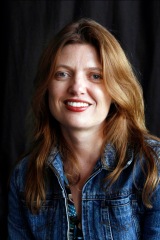
ASSITEJ is the International Association of Theatre for Children and Young People which has national centres in almost 100 countries. ASSITEJ SA was launched in 2007, to learn more visit their website.
You can access the press release of ASSITEJ for the World Day of Theater 2018 here.
- What are the vision and the role of ASSITEJ in South Africa?
ASSITEJ South Africa is the national centre for the International Association of Theatre for Children and Young People. Every national centre is meant to review its landscape and the national context of what is happening, look at where the needs are. In some countries, you have very strongly developed theatre for young audiences for example and it might be more about networking between established artists or giving them more of an international platform for their work. Within the South African context, so many different aspects need attention. We like to think that the way we engage with the artists in South Africa is very systemic: it’s about the whole system, the access to the arts from nought to 19 basically. We are looking at 4 main areas:
- Gaining access to the arts. What’s happening in creative spaces? What’s happening in schools? What’s happening in theatres? How can we foster and build on that so that children and young people gain access to the arts? Can we create new spaces within the festivals? Can we create free festivals? So it’s looking at all the access points.
- Supporting artists. There are many artists that are interested in creating work for young audiences, but maybe they have never done it before; they don’t know how to make it for a particular age group or they are at a stage where they are making brilliant work, but they don’t know how to connect with international festivals. It’s about supporting artists at every stage of their development to make theatre for children and young people.
- Empowering education. Obviously, we believe the arts is one of the most powerful ways to learn about everything. If you look at our CAPs curriculum for example (in fact even the old OBE curriculum) the basic outcomes that are embedded in it are now called AIMS. Almost all of those AIMS – in fact, all of them- are best served by artistic practices as the mode of learning, interestingly. In other words, the arts can do far better than what traditional education can do. We are saying how can we better infuse the arts into schools? How can we make that creative art is used as a method of learning? How can we make sure that children – particularly in early child development and in primary school- are able to play and be creative and use the skills that the arts give you to engage with the world around them? How do young people find spaces within the school system to express themselves and their identity? It’s about training teachers, training after-school facilitators, and directly empowering children but it’s also about engaging with the systems of education and trying to see how we can make the most impact.
- Connecting and advocacy. I think one of the thing ASSITEJ is able to do because we are a network is to bring together so many different voices, from community practitioners who might not have received a formal education but are making enormous changes in their community through the arts, to the highest flying international performer who’s out there taking his work around the world. We are able to have a very broad reach to spread this idea that the arts are very important to children and young persons, that it is a fundamental right.
“Art is a fundamental right”
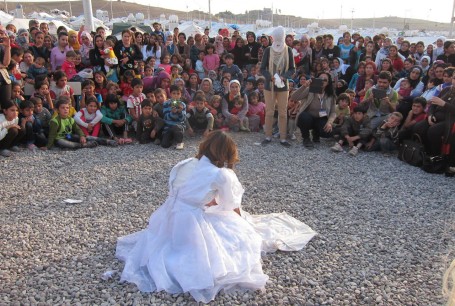
- So far what are your biggest achievements? What are you most proud of?
I am most proud of the fact we were able to host an ASSITEJ World Congress and Arts Festival in South Africa, the first time it was being hosted on the African continent, and in our tenth year of existence. I think that is an amazing achievement. The spin-off from that has been huge; we have seen a very different level of awareness from everybody, from artists, from sponsors, from the government, as a result of what Cradle did. We have also seen artists getting opportunities that they have never had before. Currently, I am working with 5 different companies, who are taking their work to Scotland, Germany, Japan, America, Sweden and Belgium. It has opened doors for South African artists. It’s also shown us there is a big appetite for theatre for young audiences. We saw parents responding to baby theatre so positively in Cape Town and realized there is a market for this work. It was really a standout moment and what we learnt from this experience will define all our strategic goals onward.
“There is a big appetite for theatre for young audiences”
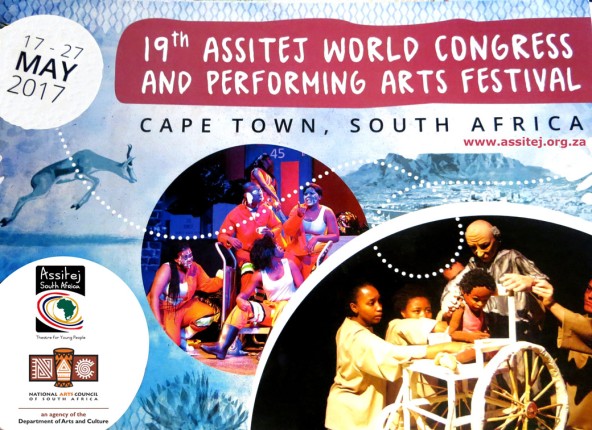
- How would you define arts education or explain it to someone who doesn’t understand what it means?
Firstly the arts are in my view the most natural form of learning. If you see how a baby or a child engages with the world, they essentially engage through their senses and through play. Both things are at the heart of the arts. Whether it is music and we are listening or feeling the vibrations, whether it is dancing and we are moving through space and enjoying a physical awareness, whether it is drama with verbal and non-verbal communication or emotional connections, understanding the world through someone else’s eyes. Basically, the arts are engaging with our playful part, and they are also talking to our multiple intelligences. There has been a huge amount of research around the idea that there is not one form of intelligence scientifically defined (essentially the kind of intelligence the education system is largely speaking to). In fact, we have multiple forms of intelligence; some people are very skilled at school but some people are natural musicians or have a great connection with nature and are able to read nature in a way others can’t. All of those things are not being stimulated. What arts education is able to do is to reach a wider number of people by appealing to all those different forms of intelligence that we have as human beings. Arts education is using the art both as a methodology and as content; each is equally important. What we learn when we are involved in a play could be history, sociology, philosophy, morality; it could be a whole lot of other subjects. It could also be soft skills around how to collaborate, listen, and feel with one other. So you are building lots of intelligences through being involved in a theatre production. And you could also be learning the arts for their own sake, of course. Art is how we express our questions about the world in the most compelling forms. Whether art is a process or a product it is engaging with the whole of who we are as human beings. It should be life-long, all of us should be involved with arts education even as adults, to keep discovering different parts of ourselves that would have been otherwise neglected.
“What art education is able to do is to reach a wider number of people by appealing to all those different forms of intelligence that we have as human beings. Arts education is using the arts both as a methodology and as content; each is equally important.”
- One of the big focuses of ASSITEJ’s work is Theatre for young audiences, promoting content that is meant for a certain age group of children. How does it complement what children learn in the classroom with the arts educators?
I really believe that you need to have both peak experiences, and on-going engagement and stimulation. The peak experience is the moment of confronting an artwork, of seeing this amazing painting or a piece of theatre that is magical or memorable in some way. What that moment does is it opens your eyes, it creates a perceptual shift in your brain that allows you to see the world in a different way, it opens a window. Arts education is complementary in continuing that experience with the young person and exploring it further. “I saw actors doing that amazing thing on stage, how can I make it with my own body? Why does it make me feel that way?” The on-going engagement with arts education is not always the most inspiring; it’s the rational moment, the moment of personal discovery and growth. The moment of contact with the arts is very inspiring and makes you want to continue whatever you are doing, to try harder and to learn more. So you need those peak moments of experiences which are designed specifically for the age and stage development that the child is at. A six-month-old baby is not going to engage with a full-length ballet, for example, in the same way, that a young teen would. But there is beautiful dancing for six months old babies that can be created; perfect for their level of development, and for the way they are experiencing the world through their senses. In a world that is increasingly becoming disconnected, because of technology, I think it is tremendously important that we go to the theatre – it creates a sense of community: coming back to what really makes us human and our capacity to connect with other people.
- You travelled the world a lot with ASSITEJ and you have witnessed a lot of projects. What are the best practices that really inspired you, methodologies you think we should implement in South Africa?
It could be a very long answer, but I will give you a couple of examples. One example would be Danish arts education. In Denmark, every child is meant to see theatre at least twice a year and the schools are set up in a system where they get sponsorship, half of the theatre experience is sponsored by the State. The schools are set up in such a way that they can receive theatre, every gymnasium has blackout facilities and there might be a dance mat kept in the school. A theatre company can basically come in and set up everything they need very quickly. They are able to bring very high-quality work, technically exceptional work, we are not talking about 2 people and a box, we are talking about very complex and technical kind of work. And this work travels all the time to schools. One of the biggest TYA festivals in the world is the Danish April Festival where over 130 companies all over Denmark come together to showcase at the festival. Sometimes there are more than 200 performances for young audiences being showcased at a time. Teachers, principals and governing bodies can come to the festival – – apart from the local audiences who also get to see the plays – to see the plays and select which shows they want to come to their schools in the coming year. They have even gone so far as having culture gangs (children selecting productions for their schools), a similar term to what Magnet theatre uses. It’s a highly sophisticated system and it really works. Companies come to the festival and they don’t get paid for their performance at the festival, but if their work is selected, they will have work for the next year and tour all over the country. That for me is a system that really works. We have tried to implement some of that in our Theatre4Youth programme. A lot of our Theatre for Youth programme is based on this Danish market but we don’t have resources here in SA. We don’t have buy-in yet from the Department of education and we don’t have sponsorship for the schools. What we are trying to do is to have one unifying system which allows everyone to see what is available at any given time. The online catalogue gives artists access to school details and information – whether the school has a hall for example – in one single place, and direct contacts to schools. They can plan their tour online. Schools can also have a look at what artists have available in this online catalogue and then order that piece for their school if it is available.
“In Denmark, every child is meant to see theatre at least twice a year”
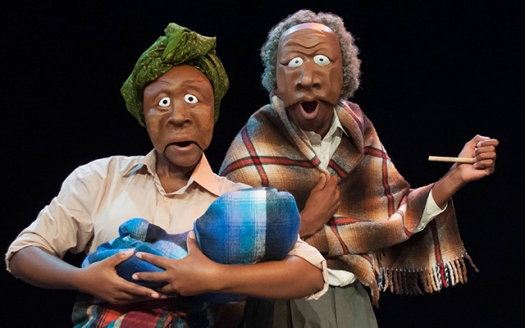
I have also seen a number of different examples and it’s difficult to say whose have influenced me most. Certainly the National Theatre in the UK, the Kennedy Centre in the USA, some of the Australian theatres – they are numerous – have really exciting educational programmes linked to professional productions for children. There are pre-show workshops, post-show workshops and educational materials are developed. There are really exciting engagements for the young people with the theatre pieces themselves and sometimes also backstage tours. It’s really seen as total engagement. We have tried to do that in various projects in South Africa, with War Horse being the biggest example. We were able to give 5000 children in South Africa both workshops and an experience of the production. Essentially what we were doing was acting as the Education officer for two big theatres, in this case, Artscape and Montecasino in Joburg. For me, it’s reflective of the fact that South African theatres do not employ Education officers. This role doesn’t have a place in South Africa; occasionally you have someone who has the title, but essentially they are school booking agents. They are not really investing in making productions more engaging for young people, or connecting to the curriculum. The big question for War Horse was how to make it accessible: this production is set 100 years ago and it’s about a World War in countries most of the kids don’t know about, and they talk in odd British accents. If you are a kid coming from Soweto or from Gugulethu, you have no relationship with this production; however amazing it might be, you are going to be alienated by it. How do we prepare children? We are not going to teach them the history of the World War, but rather we want to use artistic experiences to give children the feeling that they can connect with this piece. For some children, it was puppetry workshops or for some children, it was experiencing improvisations about what it might feel like to go away to war… As a result, the reactions to those performances were some of the most amazing reactions that the company had ever experienced. For me, that area of work is very important in South Africa.
“South African theatres do not employ Education officers. This role doesn’t have a place in South Africa; occasionally you have someone with the title, but essentially they are school booking agents. They are not really investing in making productions more engaging for young people.”
Another area that has been very much part of our engagement is what has been happening in schools, in the curriculum. What models are there out there have been used to really upskill teachers who never necessarily had training in the first place? We have been able to gather from a number of different places, ideas that have led to building of this curriculum for the KickStarter project which is essentially a teacher in training project, a teachers support project. For example, the department of Arts & Culture has a programme called “Artists in Schools” but it’s not really working, it’s not changing the situation. Some kids have some nice experience for some time but essentially an artist comes into a school, has a great engagement for 3 months and then goes away. And so nothing changes, the teacher is the same teacher; the teacher still teaches arts badly or doesn’t teach the arts anymore. Also, some artists are not that good at facilitating in schools anyway. We had to find a way to go deeper, longer term for the teacher; involve the professional artists as well but the professional artist should not be the one delivering the programme. That’s not sustainable. We need to get the teacher to be able to deliver the programme. So building Kickstarter came from recognizing our particular reality and using the examples in the other parts of the World that have done it well, as well as the incredibly valuable work of Creative Voices, an NGO which pre-existed ASSITEJ SA, but allowed us to take over its methodology and adapt it for CAPS. We feel that we now have a very robust model of engagement which has proved that it works!
- Can you explain what is the “Take a Child to the Theatre” campaign and how will it take place in 2018?
“Take a Child to the Theatre” started as a global campaign in 2012 that we launched as ASSITEJ International, to bring the world’s awareness to March 20th, the World Day for theatre for children and young people. We wanted to make a call everybody could get behind, regardless of where they were in the world. It’s worked very well over the years; it’s been getting more and more attention. Every national centre decides what they are going to do, what projects they will connect to Take a Child to the Theatre. In South Africa what we have tried to do is to really link it to personal responsibility: what can YOU do to make a difference? If you are a parent, you can take your children, if you are a grandparent you can take your grandchildren, if you are a school you can give your students access. Now, what if you are a school and you can’t give your children access because you don’t have money? That’s where we come in.
We solicit all our theatre companies and our theatre houses that are members of ASSITEJ. For example, this year there is 1000 discounted tickets and 20 free tickets for West Side Story produced by the Fugard Theatre, but performing at Artscape. Sometimes we have artists who say they are willing to do some performances for free. We have also in KZN been partnering with the Alliance Francaise for a number of years and they have a day called FrancoFete which generally is on the 21st of March and proposes a programme of work for children. The Zabalaza festival is also doing a lot at the Baxter. We try to find all the opportunities that we can to get children to the theatre. This year we are also launching a Thundafund Campaign to help fund some productions to schools who couldn’t otherwise afford it. There are some companies that can’t afford to volunteer and the schools can’t afford to pay them. The Thundafund campaign will try to raise some money to take productions into schools and parts of the country. The real point of the campaign is to “conscientize people about why taking children to the theatre is important. This year in my World Day speech I insisted on the idea of not just taking a child to the theatre but also taking theatre to the child. In our context, that’s very important. It’s a challenge to the European or American practitioners, with a Western mentality, who often have a very elitist view of what theatre should be doing. As far as they are concerned, good theatre can only exist in a Theatre House with exquisite lighting etc. What I was trying to say in this message is that magic that can be created by transforming a space that is never usually used for the arts or for creativity into a theatre space. It shows us the potential for transformation and children need to see that, particularly when they are growing up in difficult situations: to see that it is possible for the world to change, that is possible for a space that is ugly to become beautiful. I suppose we are trying to put those ideas into the world, and get people to talk about them and hopefully to internalize some of them and practice them.
“Magic can be created by transforming a space that is not usually used for the arts. It shows us the potential for transformation and children need to see that, particularly when you are growing up in difficult situations: to see that it is possible for the world to change, that is possible for a space that is ugly to become beautiful.”
- Where can schools or people interested to participate find detailed information?
The best thing is to do is to contact on our website the provincial coordinators, they hold all the information for each province. We will be publishing a couple of press releases and sharing information on social media. We have a big database of schools so we will also be contacting schools directly and offering them a list of opportunities.
| Theatre4Youth – Western Cape
Faye Kabali-Kagwa |
Theatre4Youth – KZN
Pauline Dalais |
Theatre4Youth – Northern Cape
Letlhogonolo Nche |
| Theatre4Youth – North West
Tiego Shametja |
Theatre4Youth – Limpopo
Keitumetse Tlokana |
Theatre4Youth – Mpumalanga
Nkosiyami Ngubeni |
| Theatre4Youth – Free State
Styx Mokejane |
Theatre4Youth – Eastern Cape
Thembela Madliki |
Theatre4Youth – Gauteng
Thembile Tshuma Theatre4youthgp@assitej.org.za
|
- What else can we expect from ASSITEJ in 2018, especially in terms of arts education projects?
In the upcoming months, we will have 3 projects that are running simultaneously and that are very much education focused. I am excited about all of them but the one that is potentially a major development is that the Department of Education has approached us to write a national textbook for Life orientation from Grade R to 12 which will be both a physical copy and also an online version, available in all schools. This will include creative arts as a method. The second project is the Kickstarter training, the teacher training, which this year we are extending to the Northern Cape. The third project is the After School Game Changer with the Western Cape Department of Cultural Affairs and Sports. In 2017 we trained 45 practitioners from all over the Western Cape Province including the Karoo, Garden route and all of that, to facilitate drama and dance in after-school classes with children. This year we are training another 56 practitioners from all parts of the Western Cape.
KEEP AN EYE ON THE BLOG FOR MORE INFORMATION ABOUT THOSE 3 AMAZING PROJECTS!
“We must take ourselves very seriously by challenging ourselves to do the best we can do at any given time.”
- As the President of ASSITEJ and someone who has been in the sector for so long, what would be your message to the art education community, people who are passionate about the “cause”, but are sometimes facing so many challenges?
Firstly Arts education is transformative work and we must never underestimate the power of arts education. As a result, we must never allow ourselves to do poor arts education because we desperately need to use the power of this approach or methodology – however, you want to call it – to make a change. Anything we can do to support one another to be better, anything we can do to collaborate with one another to ensure that every child in this country has access to arts education, we should do. We should not allow divisions or perceptions of one another or laziness or sloppiness or anything else to get in our way to really build a strong arts education framework in South Africa. I really think we live in a time now where there is a huge opportunity; just seeing the fact that the department of education is embracing creative arts methods right across the curriculum and ages is a really exciting move. We are also starting to understand how ECD is fundamentally important and what a huge role the arts plays in ECD, and that is the basis for everything that happens thereafter. We cannot have it for university students, if you haven’t also had a successful ECD arts education; so really what we must do as a community is contribute in whatever way we can to building that systemic fabric to hold all of this, a system that can take a child from birth through to adulthood and ensure they are exposed to the best that the arts have to offer all the way through their life. If we do that I really believe we can change the future of this country, we can have an enormous impact for young people, on their capacity for leadership, their sense of identity, their sense of community, their sense of empathy. We must take ourselves very seriously by challenging ourselves to do the best we can do at any given time.
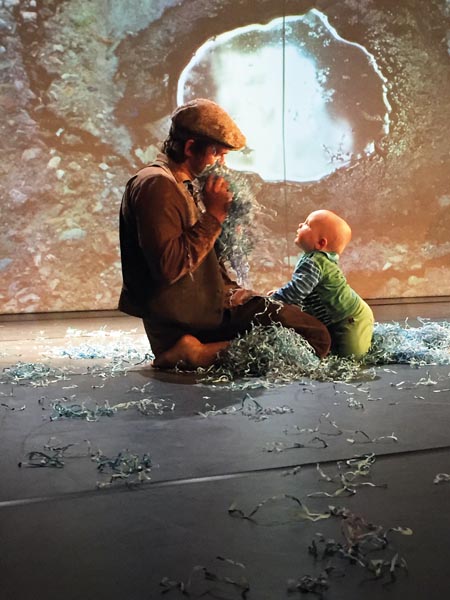

I would like to get in touch with Ms Hardie please.
LikeLike